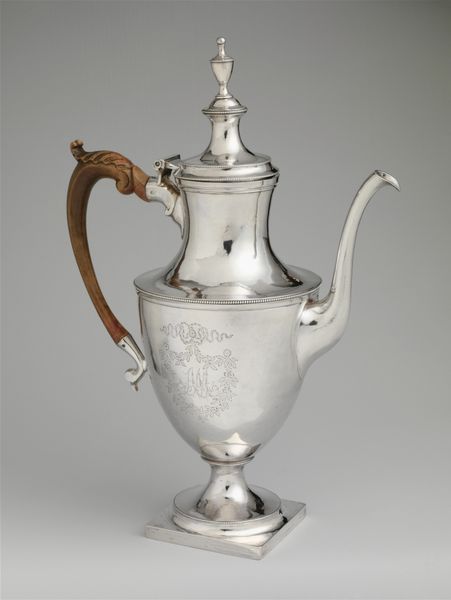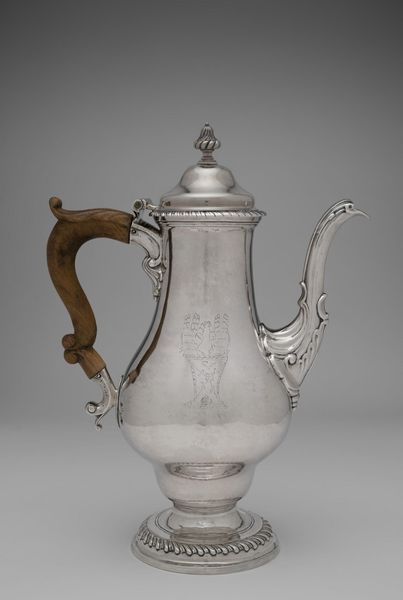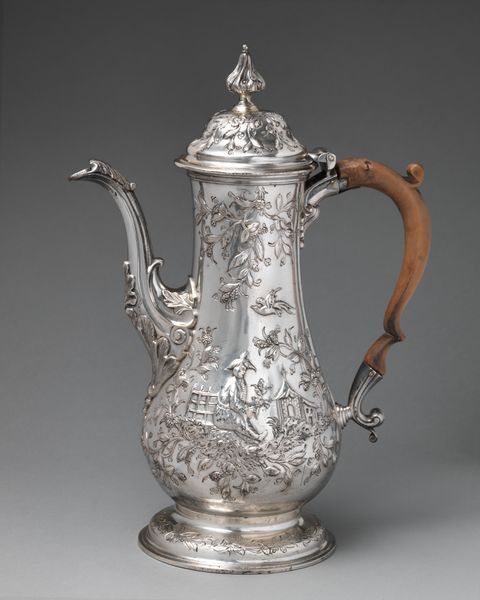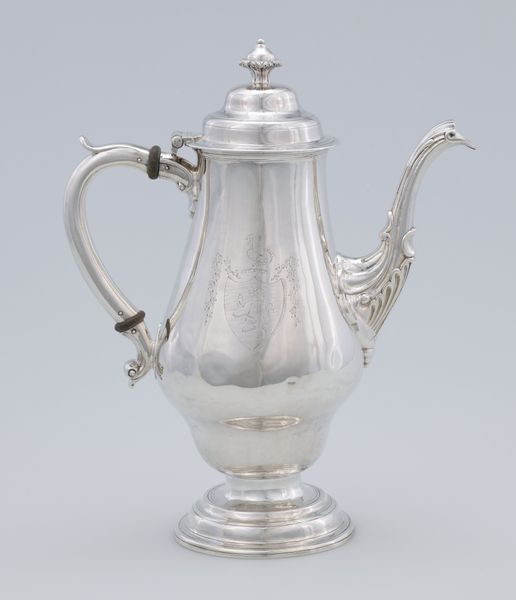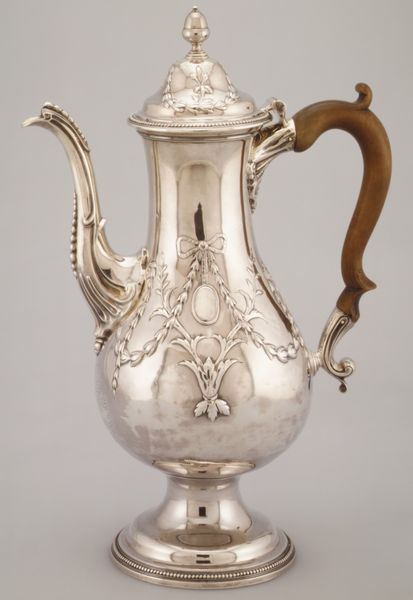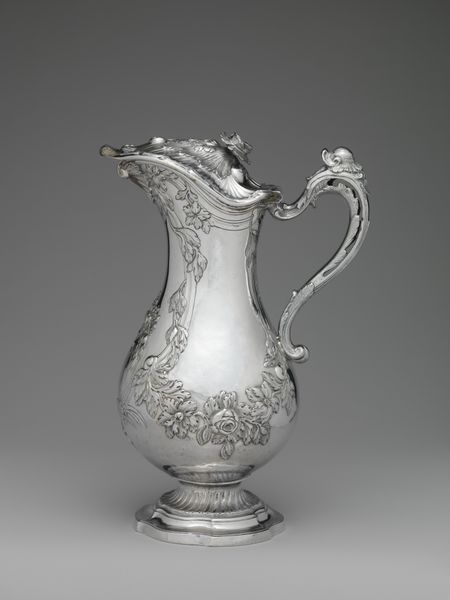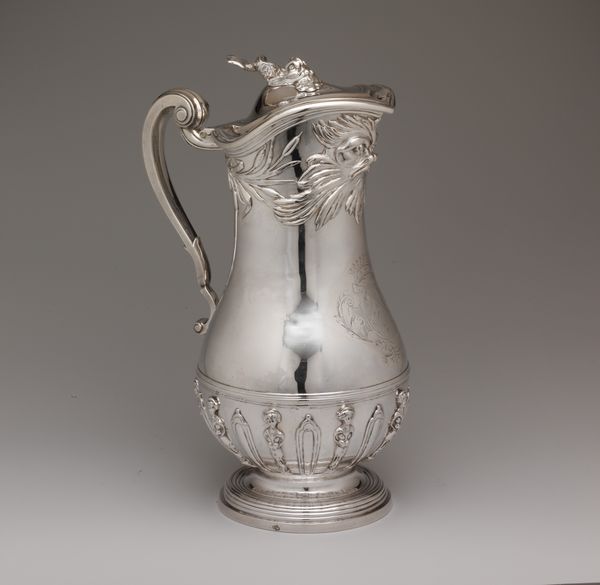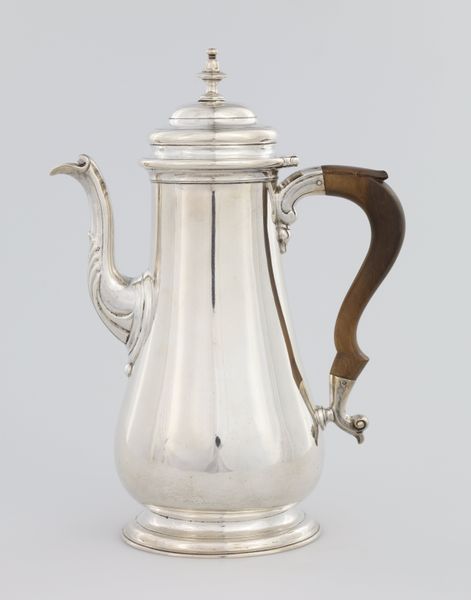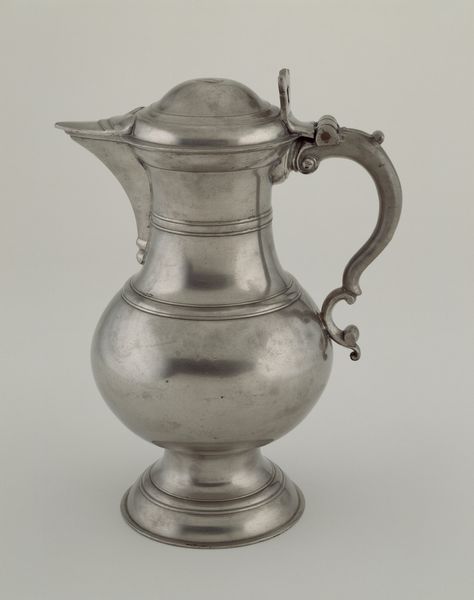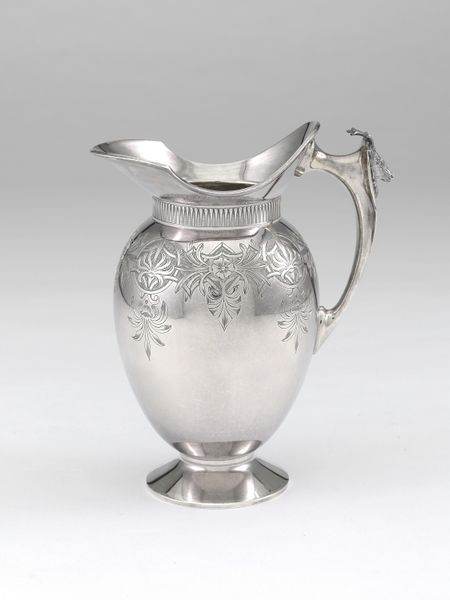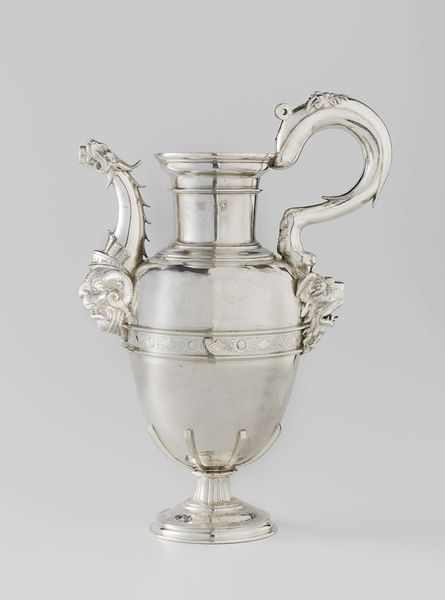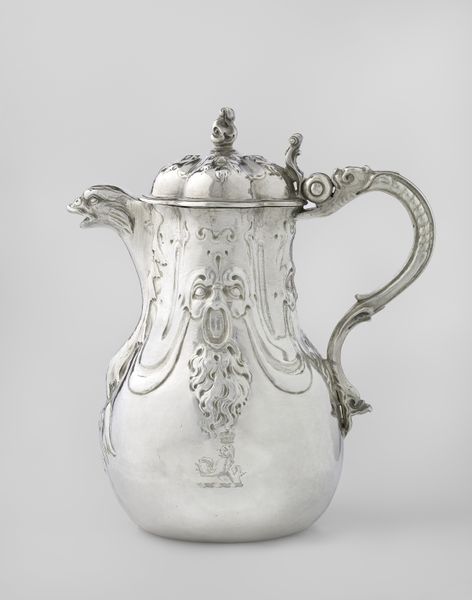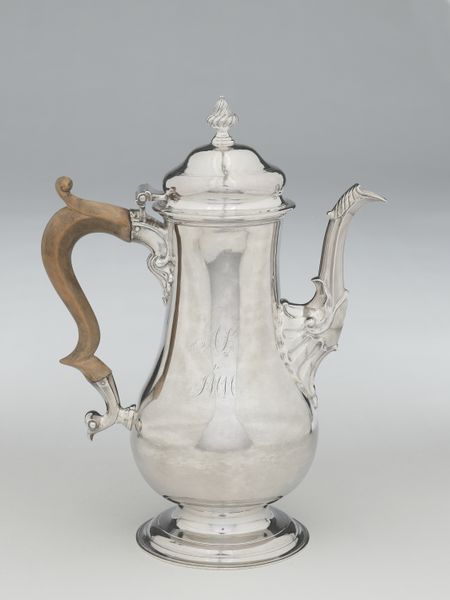
Dimensions: Overall: 14 7/16 x 10 5/8 in. (36.7 x 27 cm); 48 oz. 7 dwt. (1503.9 g) Foot: Diam. 5 in. (12.7 cm)
Copyright: Public Domain
Curator: Immediately striking, isn't it? The severe elegance of this Coffeepot, crafted by Charles Faris around 1790-1800, displays the unmistakable clarity of line characteristic of the Neoclassical movement. The silver surface reflects the light beautifully. Editor: Yes, it’s certainly pleasing to the eye, if a bit imposing. One wonders about the labor required to achieve such polish on what must have been a rather ordinary household object, a coffeepot. And consider the origins of the silver itself, and what exploitation occurred in those mines. Curator: Let's focus on the form. Observe the relationship between the hexagonal base and the swelling, curvaceous body. Then note the finial, cleverly fashioned to resemble a miniature pinecone, sits in such satisfying contrast to the rectilinear foot. Do you not admire the way Faris has created such compositional harmony? Editor: I suppose. But beyond the composition, consider what it tells us about social class. This wasn't made for just anyone's kitchen. Silver was precious, the labor expensive, and the coffee… well, it points to privilege. We are essentially viewing a material symbol of wealth and social standing. The surface bears a vacant, ornamental medallion. Who used it, and were they involved in the creation of such a status symbol, even as it enriched their life? Curator: You see class, I see craft! Consider the handle, the spout…each element thoughtfully designed to echo and complement the overall form. What can you gather about the design by considering it using structuralist interpretations? What systems is it composed of? There's an inherent beauty in its design! Editor: Well, it may seem beautiful, but remember what that shine obscures: issues of extraction, production, and access. It’s impossible for me to overlook the context of its creation. We must always reflect on the socio-economic forces that shaped it. Curator: I think it exemplifies Neoclassical design beautifully; its clear lines and measured proportions serve as an example for further art of this era. Editor: Yes, but never at the cost of forgetting whose hands shaped the silver, and at what cost. A materialist perspective insists we ask.
Comments
No comments
Be the first to comment and join the conversation on the ultimate creative platform.
